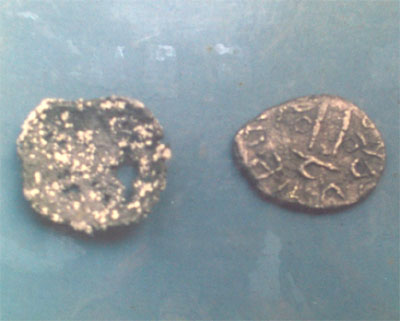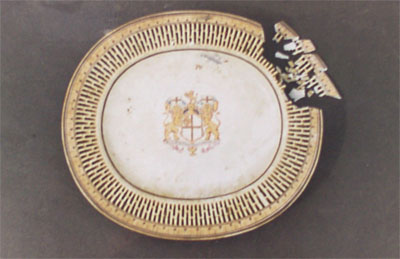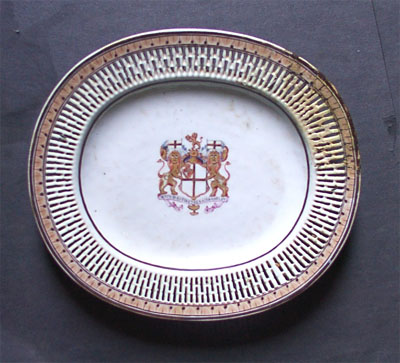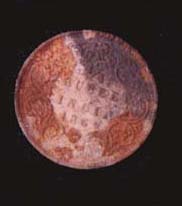
|
Conservation of Lead Coins
Lead is one of the ancient metals. The Romans used lead for lead water
pipes. The use of lead is found in coins also. The Pallavas, the Satavahanas,
the Pandhyas and the Cholas used lead in the minting of coins. As lead is very
soft and easily degradable material, the lead coins need to be attended very frequently as they
disintegrate very fast and converted into powdery materials. The same thing happens in the case of
lead coins from Andipatti in Tamil Nadu. The coins are fairly in good condition excepting
few of them. The affected coins were treated with Amberlite IR 120, an ion-exchange resin to
remove the corroded matter. In the case of lead coins, they were kept covered in a warm solution
of distilled water with Amberlite IR 120. The corroded lead portions are cleaned by ion-exchange
method and the corroded salts are cleaned and the metal is conserved. Unprotected lead will be
corroded further, if the bare surface is exposed to the atmosphere. Therefore, the coin is
impregnated under vacuum with the help of 2% solution of poly vinyl acetate in acetone.
|

Before Treatment |
Conservation of Ceramics
Ceramic is fired clay. There are many types of firing of clay materials.
One is open firing and the other is inverted firing. Normally fired clay will appear red and
black. Unless the potteries are glazed they cannot be used to keep liquids. Therefore glazing is
done after white clay vessels are fired by coating a paste containing the mineral colouring
material. This practice was in vogue during the Moghul rule in India. The East India
Company in India too prepared ceramic vessels.
The broken ceramic plate
is cleaned with rectified spirit and teepol to remove the oily accretions and the edges were
cleaned similarly to provide effective adherence. The broken edges are mended with quickfix,
an adhesive, which sets quickly. The broken and lost portions are reconstructed with the help of
white M-seal. A support is provided to reach the proper positioning of the mended
portions. If the portion has any painted details, the painting is done with acrylic colours. |

After Treatment |

Before Treatment |
Conservation of Silver Objects / Coins
Silver is a noble metal, which turns black (silver sulphide) and white
(silver chloride). The blackening of silver is called 'tarnishing'.
Silver objects / coins are cleaned by keeping them in a 10% solution of
formic acid to remove the black colour (silver sulphide) and immersed in a solution of 10% ammonia
to remove the white colour (silver chloride). After thorough washing, the coins are dried and
coated with a 2% solution of poly vinyl acetate in acetone as a preservative coating.
|
 After Treatment |